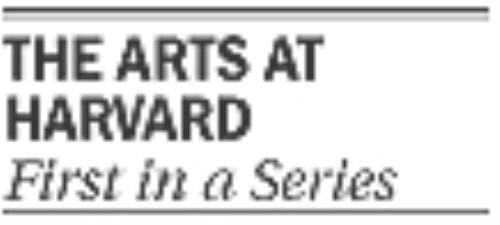Today marks the start of Arts First—Harvard’s annual festival celebrating the creativity, diversity and depth of artistic pursuits within the University community. More than 200 music, theater, dance and visual arts events are scheduled for this weekend. In the 11 years since the inaugural Arts First, Harvard has seen an explosion of involvement in the arts. This sudden upsurge of activity has surely made Harvard a more vibrant place. But it has also placed an undue strain on rehearsal and performance space—no issue looms larger on the minds of Harvard’s artists. As we pause this weekend to celebrate the arts, let the festivities also inspire and remind us of how much Harvard must still do to meet the needs of its burgeoning arts community.
The massive increase in the arts has been demonstrated campus-wide—from skyrocketing enrollment in extracurricular dance courses (more than 600 Harvard affiliates now take dance classes through the University) to the emergence of new choral and a capella groups (interest in participation has expanded beyond the dozen already on campus). The ever more competitive admissions process has helped fuel this expanding interest in the arts; it is rare to find a Harvard first-year with no artistic background or training. An increasingly well-rounded—and often determined—student body has led to a flurry of new arts activity. The Office for the Arts (OFA) now estimates that approximately 3,000 undergraduates—about half the College’s students—are involved in the arts in an ongoing way.
This increased interest in the arts has contributed to a critical shortage of space. Musicians, actors and dancers are increasingly in direct competition with one another for rehearsal spaces, practice rooms and performance outlets. House common rooms are frequently used for rehearsal and practice, but access to this highly demanded space requires competition with every other student group on campus.
Lack of adequate facilities will soon be compounded by the impending loss of certain key campus facilities. The Reiman Center for the Performing Arts—Harvard’s only adequate space for dancers, and incomparable in terms of aesthetics and versatility—is due to be turned over to the Radcliffe Institute for Advanced Study in 2005. The loss of the facility will devastate, if not undermine entirely, the survival of dance at Harvard. The University shamefully turned Reiman over before making alternative plans for dancers, and the College is now scrambling to fix the mistake. The future of theatre space is similarly uncertain. The renovation of the dilapidated Hasty Pudding Theater is stalled until a wealthy donor coughs up $23 million. The American Repertory Theater (ART)—the professional theater company that shares the Loeb Drama Center with undergraduates—is facing its own practice and performance space crisis. All told, the current conditions are discouraging for arts groups on campus.
In the long term, Allston may provide an answer. As several graduate schools move across the river, significant space will be freed for College expansion here in Cambridge. As it formulates those plans, the University must seriously consider the future needs of Harvard’s arts community. It is not only imperative to provide for adequate performance and practice spaces, but to build the right kinds of spaces. As Robert Orchard, executive director of the ART, noted at a panel on Friday, “I’m finding that younger generations are really less interested in traditional forms and more interested in hybrid forms, where music and dance and theater and visual arts collide in interesting ways. To have an environment in which all of these groups are isolated from one another would be unfortunate.” As Harvard plans the future of its campus in Allston, it ought to make room for both increased traditional arts spaces and more imaginative spaces that will facilitate interaction between artistic forms.
But until construction in Allston makes any of these long-term plans possible, Harvard must make strides to more efficiently use the facilities that are currently available. Student groups have recently begun utilizing many of the “alternative” spaces on campus—making a storage closet into a painting studio in Winthrop House, putting on a play in the bell tower in Lowell House, performing Much Ado About Nothing on the steps of Memorial Church. These efforts are exciting and promising—as is a recently created inter-House network of arts tutors that hope to coordinate student use of the varied spaces available. Efficiently navigating and reserving space under Harvard’s cumbersome and decentralized system is painstaking. Beyond the work of these tutors, Harvard needs a central coordinating body—such as the OFA—to computerize and simplify this process. If students could reliably turn to a central location to easily find and reserve available practice, performance and exhibition space, it would dramatically reduce the most stressful characteristic of arts production at Harvard.
Of course, as OFA Director Jack Megan noted on Friday, such coordination of information would require a significant change in Harvard’s priorities. Indeed, Megan said, the OFA would be interested in facilitating such a system, but that it needs a financial commitment from the University to make it happen. If Harvard’s record on the Reiman Center is any indication, the arts community shouldn’t hold its breath. But the University could indicate a movement towards fostering artistic life on campus by funding such a system, and then making more space available through it. With any luck, this weekend’s performances and exhibitions—in every available location on campus—will inspire them.














